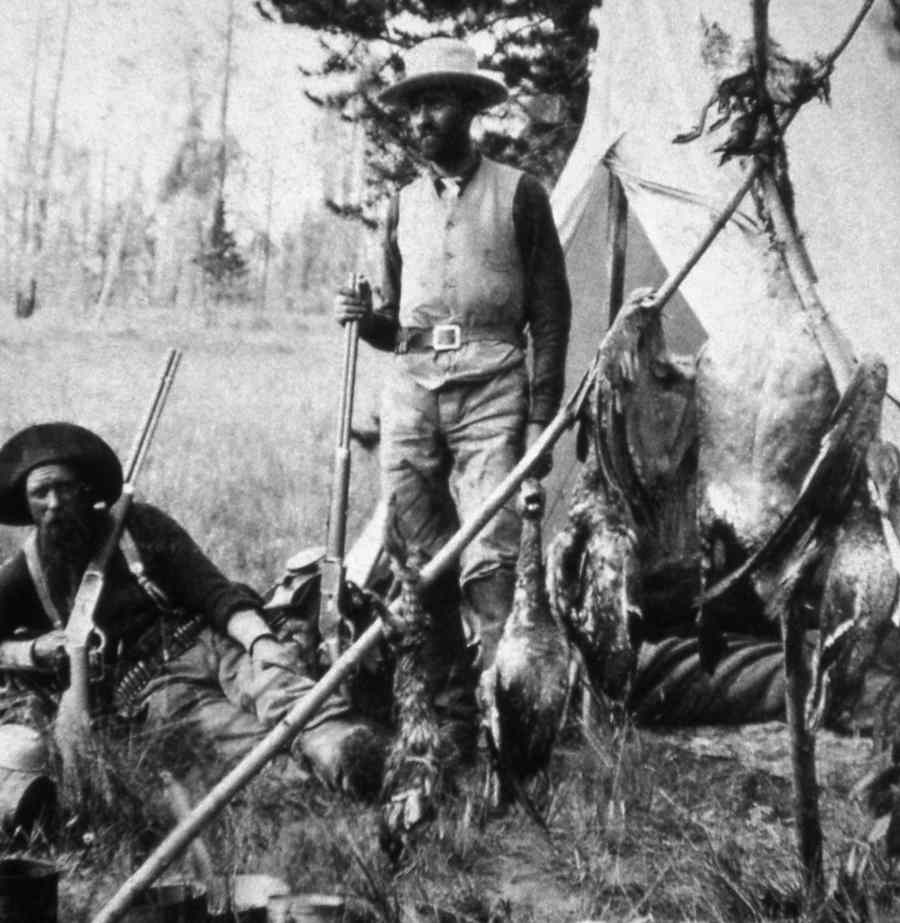
By M. Mark Miller
When the Washburn expedition returned from exploring the upper Yellowstone in 1870, they confirmed the rumors of the wonders there. Interest in the area that is now Yellowstone National Park surged when people learned it really did contain a grand canyon, a giant lake, geysers and petrified forests.
Washburn and his companions returned to civilization in late summer—too late to mount another expedition to the Yellowstone plateau where blizzards could trap travelers in September. But in 1871—a year before the national park was created—a small group of men set off “to see Wonderland.”
The group, considered by many to be Yellowstone’s first tourists, was led by Professor Rossiter Raymond. Their principal chronicler was Calvin C. Clawson who wrote about the trip in a series of 17 articles for The New Northwest, a Deer Lodge newspaper.
Clawson not only describes the sights the party encountered, he speculates on such things as using of the finely ground minerals found in the geyser basins for lady’s cosmetics, and embalming bodies in the calcium-laden waters. Clawson also describes the antics men out for an enjoyable adventure. Like groups everywhere, they sometimes entertained themselves with strange contests—like seeing who could get “First Blood.”
The morning of the 11th was very pleasant, and a calm air was highly appreciated after a boisterous night. While we made preparations to start, a large eagle sailed over and alighted in a tree half a mile down the creek. Prof. Raymond and Eiler immediately mounted their horses and gave chase.
As yet we had taken no game—not even a chicken killed or a fish caught—and there was a strife among us to see who would get the first blood.
I knew that when we got to Bear Creek, among the berries, with my dog Nig’s assistance, I could get a bear—for he was celebrated for hunting that kind of game.
Bear Creek is well named. Its underbrush furnishes bears with ample and secure hiding places. Here berries grow in abundance, and the industrious ant rears her ingenious palace. Bruin is fond of both.
After the horses were unsaddled and secured, in company with the dog and my gun, I took a stroll up the creek to see if we couldn’t bag a bruin before the eagle hunters came up. As we advanced, the “signs” became more and more numerous—until I was satisfied we would soon be rewarded with a bear fight.
All of a sudden I was brought to my senses by a terrible noise in the bushes ahead of me, as of the rushing and snorting of wild animals. Of course it was a bear out berrying, and he was coming directly towards me. Nearer and nearer he came. I could see the tops of the high berry bushes bending before him.
Now it occurred to me there might be two—two bears are a good many. I would have whistled for Nig, but to attract attention would prove ruinous, for the bear was coming plenty fast already. If the gun should fail, there would be no alternative but to trust to my knife, and that would bring me face to face with the enemy.
Old hunters say a bear can be successfully handled (in an emergency) by waiting till he rises on his hind feet, and then smiting him under the fifth rib till he dies. They never tell how the bear amuses himself in the meantime—whether he “throws up his hand” or goes for his foe “tooth and toenail.”
These things have to be considered—and I considered them. I recollected that I had never seen but one man who stabbed a bear. We had to take two horses to get him (not the bear) to camp—he was too much scattered to carry on one. The best surgical assistance never could make anything else out of him but a torn up man—although he lived.
Closer and closer come the bears—I thought I got a glimpse of them through the bushes. There was a drove of them—two abreast, rushing on me—another minute and the fight would begin. There was no tree in reach. I held a council of war—a change of base was considered in order. I immediately stepped behind a point of rocks half a mile down the creek. After waiting a reasonable time for the enemy to appear, I walked into camp—demoralized, but not damaged. The dog soon followed, panting as though he too had a race for life.
In a short time, the eagle hunters made their appearance—with their hats bedecked with trophies in the shape of eagle feathers, and an eagle hanging to the horn of each saddle—while the wings dragged the ground.
The old one had showed fight when she saw the hunters approaching, and settled down by the nest to protect her young. After several shots from a rifle, she was disabled—and Mr. Raymond climbed the tree as far as possible, threw a rope over the limb, and shook the two young out—then brought them to camp. They were monsters for their age, and after admiring them a while, we turned them loose to shift for themselves.
The first blood was unanimously accorded to the Professor by the balance of the party, but if the other parent bird had been at home they might have “got away” with the invaders.
Read Clawson’s complete account of the 1871 trip to the upper Yellowstone in A Ride to the Infernal Regions, edited by Eugene Lee Silliman. Similar stories of early Yellowstone history can be found in M. Mark Miller’s Adventures in Yellowstone: Early Travelers Tell Their Tales.

